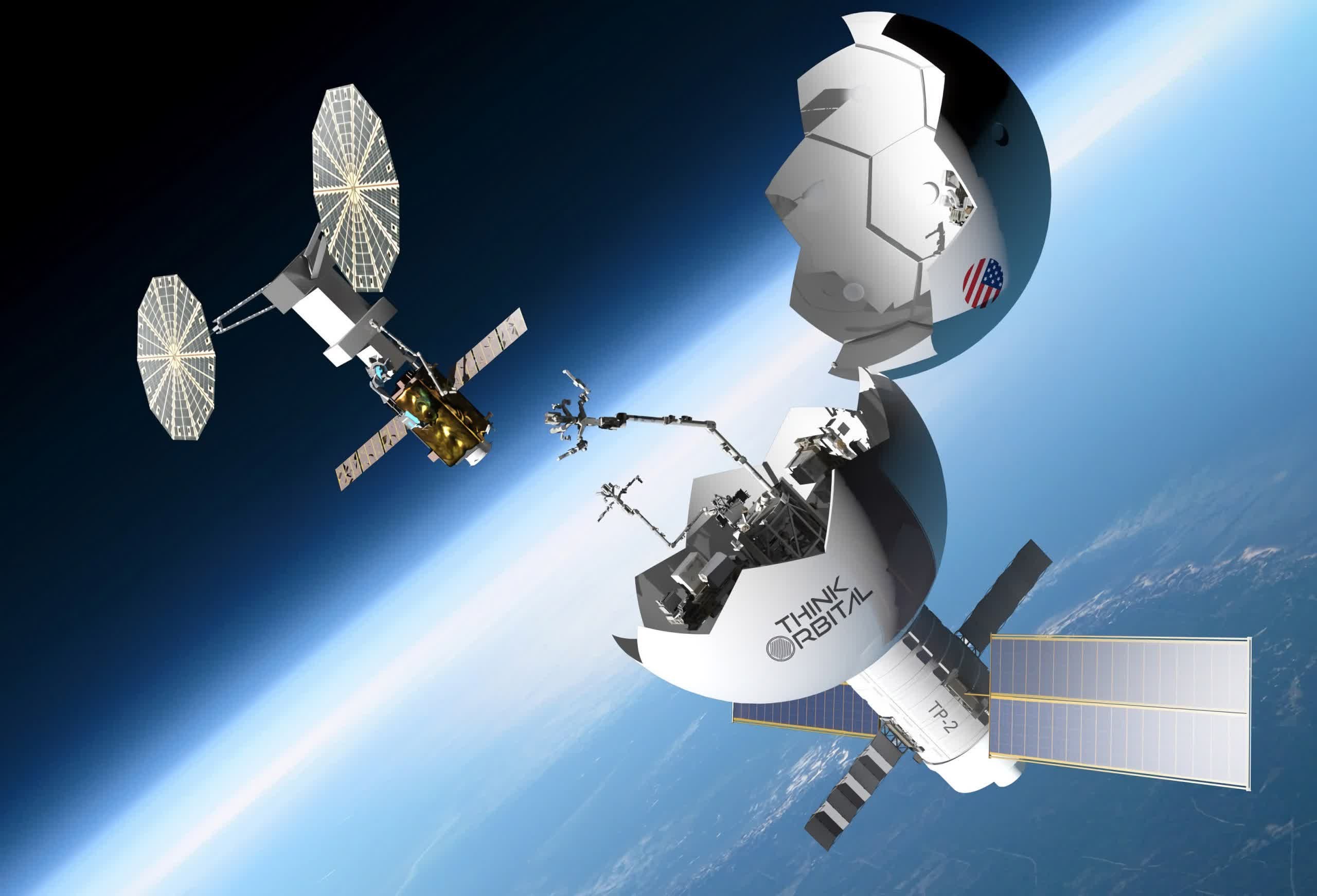ThinkOrbital’s colossal plan to recycle aluminium scrap in space turning it into fuel, ThinkPlatform a space portal
Denver, Colorado-based space infrastructure developer, ThinkOrbital has incredible ideas to deploy at the lower Earth orbit. The enterprise has designed an orbital platform or the ThinkPlatform that can be utilised for component production in space, alongside aiding in the removal and recycling of space debris which usually contains enormous amounts of aluminium.

Just like a flying saucer, the ThinkPlatform would be spherical, having a free-flying, non-pressurised platform which would either work as a portion of a bigger commercial station or simply join with an existing spacecraft’s dock. Lee Rosen, the co-founder, president and chief strategist of ThinkOrbital, mentioned SpaceX’s Starship while considering a spacecraft.
ThinkPlatform would be very beneficial in manufacturing high-speed computer chips, pharmaceutical products or fibre optics for commercial or private zones, Rosen claimed. The platform can also be a robust portal for sending out small satellites to gather scrap objects in space. These floating objects are nothing but debris excreted by big space vehicles while they traverse through different spheres in space. Mostly these are aluminium scraps, as the metal is quite commonly used to make huge spaceships.
Only the previous year, NASA had discarded ThinkOrbital’s commercial space station idea. Keeping that aside, the space organisation had offered US$415.6 million for space station proposals placed by Nanoracks, Blue Origin and Northrop Grumman. Yet ThinkOrbital is adamant about an allocation in low Earth orbit, and Rosen is optimistic that his company’s latest concept is more feasible and strong.
The ThinkPlatform will require a robotic arm to shape the construction in space. The technology responsible for building ThinkPlatform already prevails but needs an engineer’s attention to become independent, Rosen spoke to sources.
Rosen also mentioned: “This platform can be for manufacturing, human habitation, military applications and whatnot. And the good news is we don’t have to bend any physics to make it happen. In-space electron beam welding was demonstrated by the Soviets in the 80s, so we know it works.”
“We want to do an inflight demo, so we have the data ourselves. But we’re confident that it works,” he added.
The small satellites launched via ThinkPlatform would collect the space debris in orbit to either recycle them to extract fuel or to deorbit the floating objects.
Rosen made a significant remark: “We could process debris at that hub, for example, and turn aluminium into aluminium powder that could be used for spacecraft fuel.”
The organisation has currently bagged two research deals priced at US$260,000 under the U.S. Space Force Orbital Prime’s agenda for in-space service provision, manufacturing and assembly.
This enigmatic move is to secure the space tourism sector since private space firms are on a journey to unleash a prominent presence in low Earth orbit so that commercial activity can be nurtured in space. Companies are keen on developing methods where they can manufacture retail items in space. The International Space Station will breathe its last in 2030, keeping the arena wide open for occupation by the space industry’s commercial partners and inhabitants.
This news is also available on our App 'AlCircle News' Android | iOS

.jpg/0/0)





















